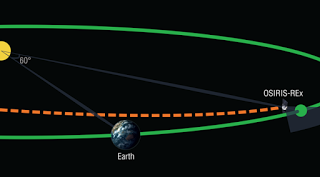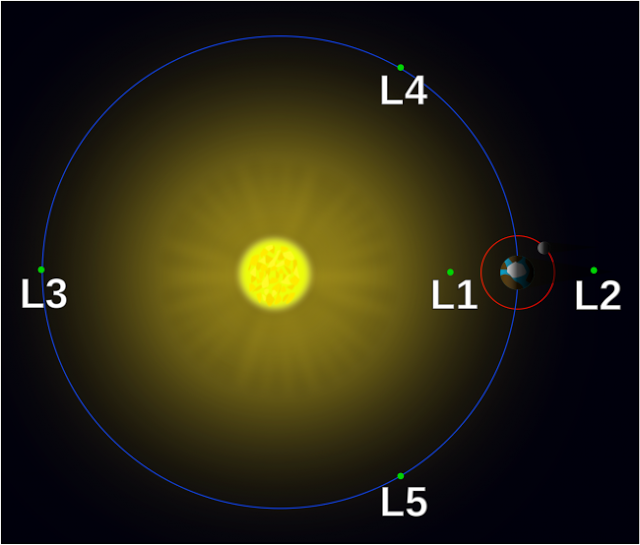

| Online: | |
| Visits: | |
| Stories: |
OSIRIS-REX Spacecraft Will Search for Earth-Trojan Asteroids!
 |
| When OSIRIS-REx passes near Earth’s L-4 point in February, on its way to asteroid Bennu, it’ll turn on its cameras to search for Trojan asteroids. Illustration via OSIRIS-REx/UA. |
Earth’s number of known Trojan asteroid might take a leap up (or not) in February 2017, when the OSIRIS-REx spacecraft – on its two-year outbound journey to asteroid Bennu – passes near Earth’s gravitationally stable L-4 point. This point lies 60 degrees ahead of us in orbit. Asteroids should, in theory, gather near there. Between February 9 and 20, the NASA spacecraft – whose mission team is at University of Arizona (UA) – will activate its onboard camera suite and search for Earth-Trojan asteroids.
The L-4 point is a Lagrangian point in the Earth-sun system. It’s sometimes referred to as a gravity well. Objects caught in orbit around L-4 aren’t pulled closer to either the sun or the Earth. Instead, they maintain their configuration – near one tip of an equilateral triangle with the Earth and sun – always moving ahead of Earth in orbit.
Space mission planner take full advantage of the gravitationally stable Lagrangian points by placing spacecraft at them, or in orbit around them.
 |
| In this illustration, our Earth and moon are inside the red circle. If there are Trojan asteroids traveling in Earth’s orbit (besides the 1 already known), they’ll be at L4 and L5. Image via Wikimedia Commons. |
Full article at:
http://news-uncensored-fresh.blogspot.be/2016/12/osiris-rex-spacecraft-will-search-for.html



